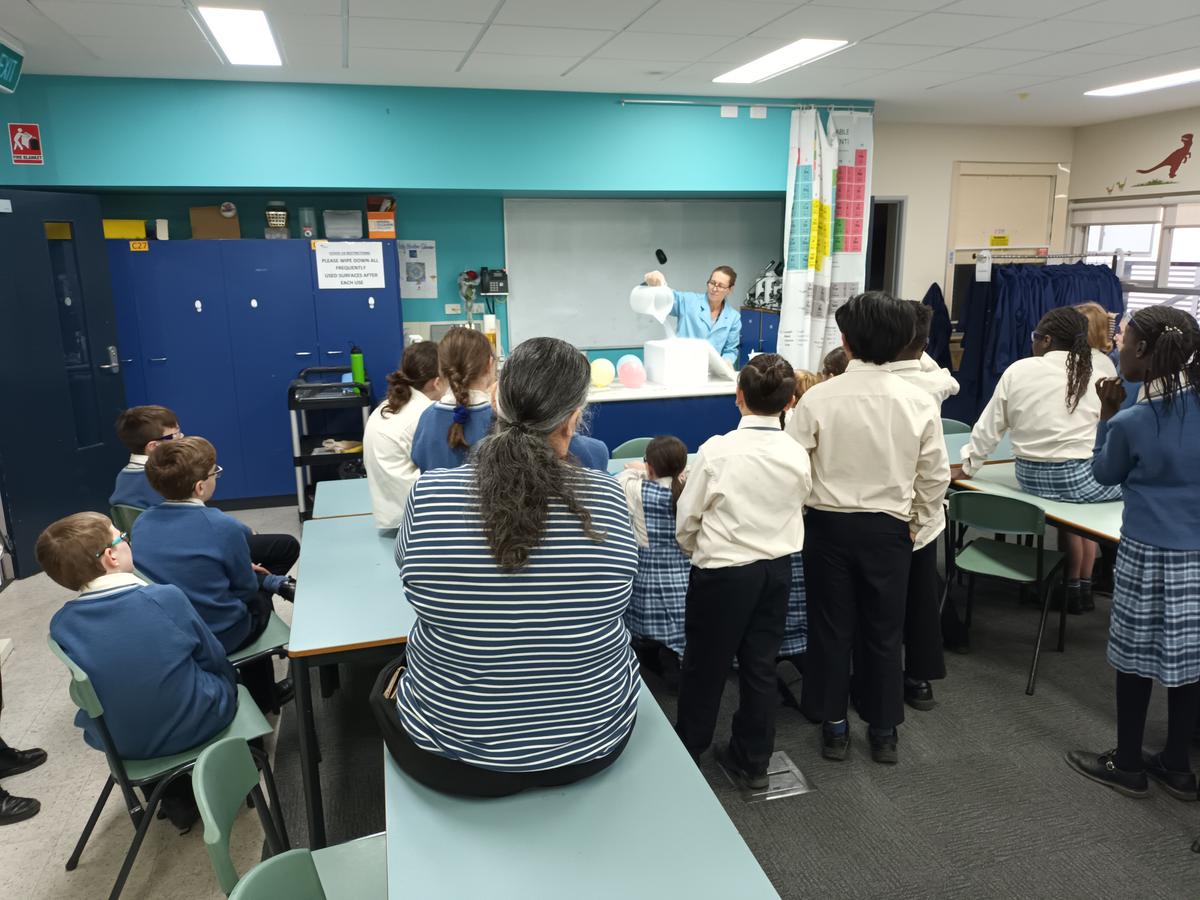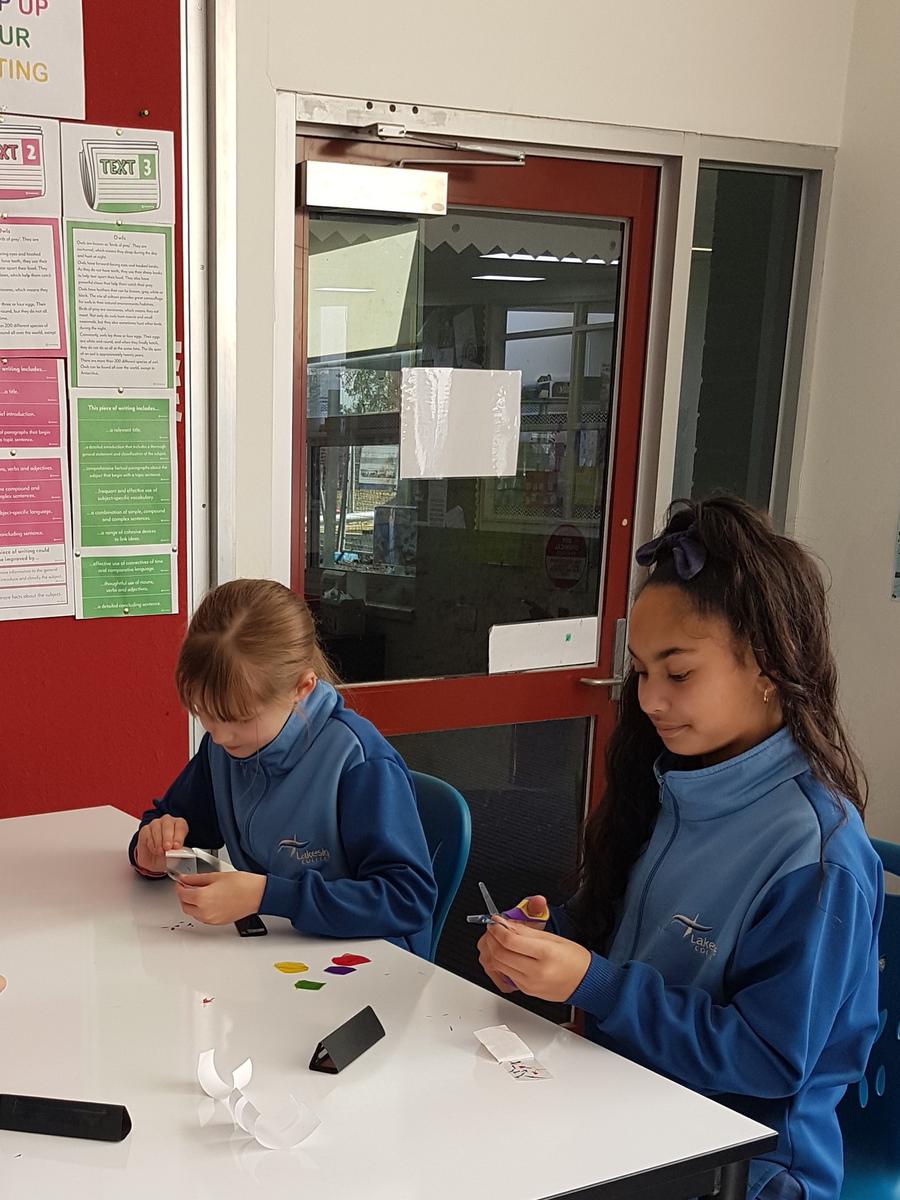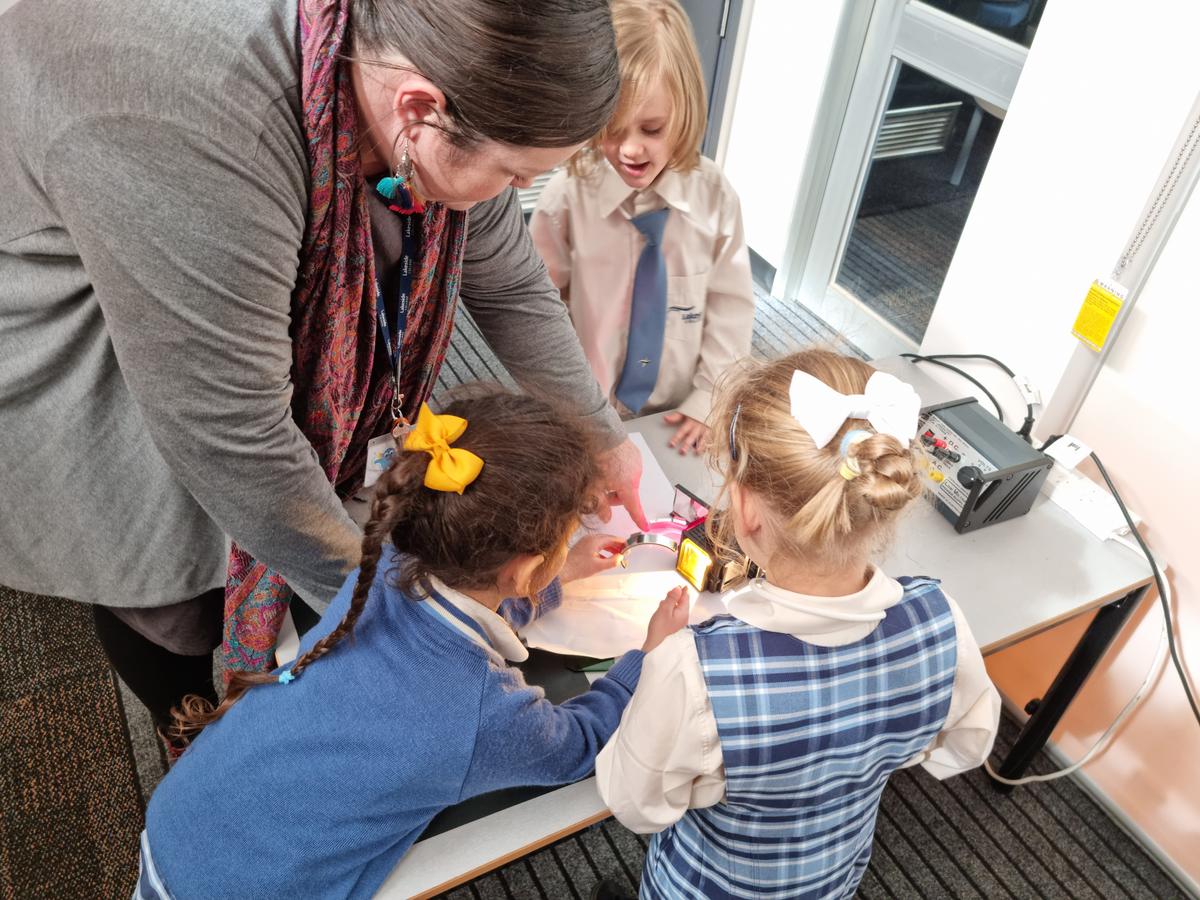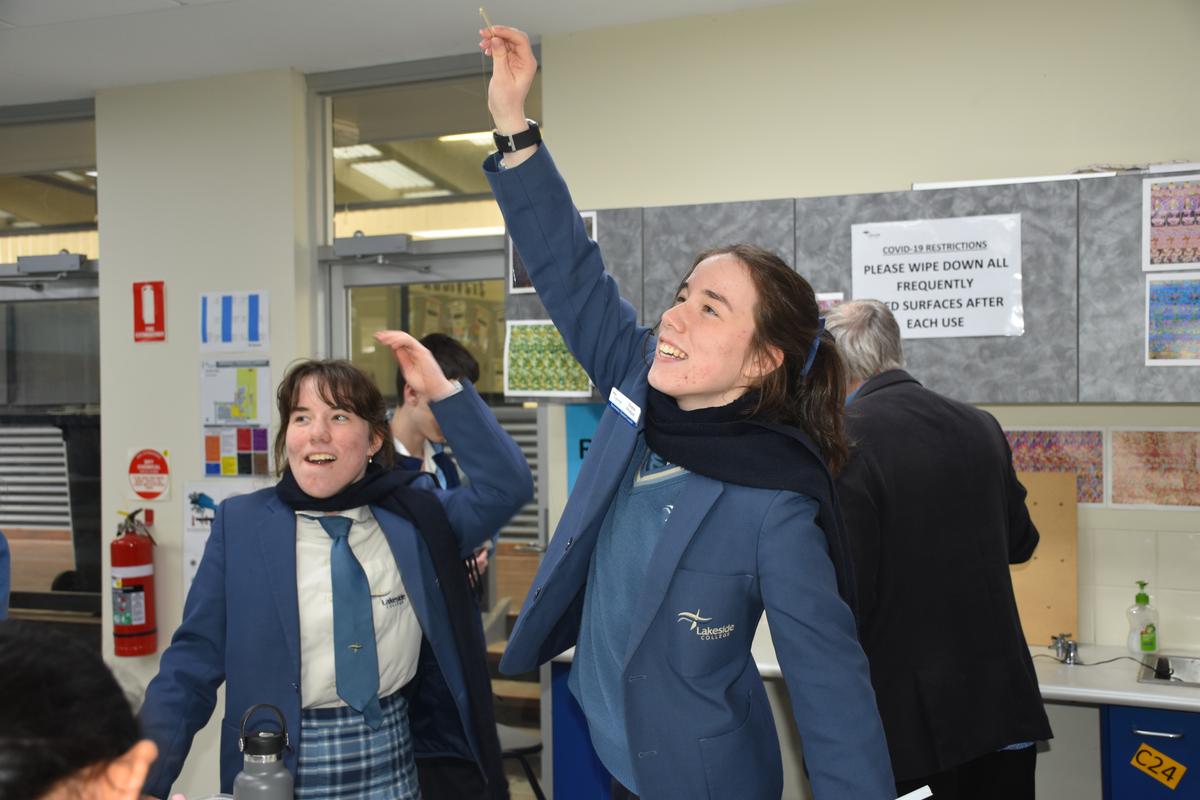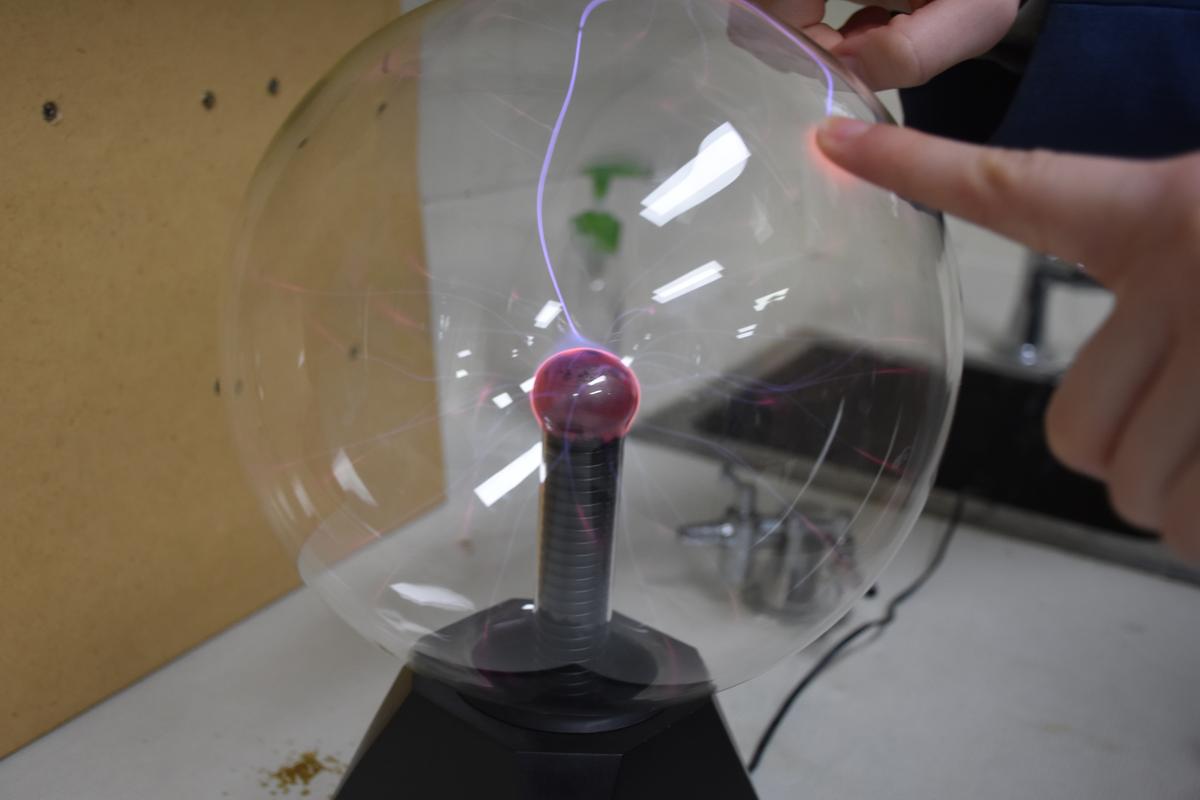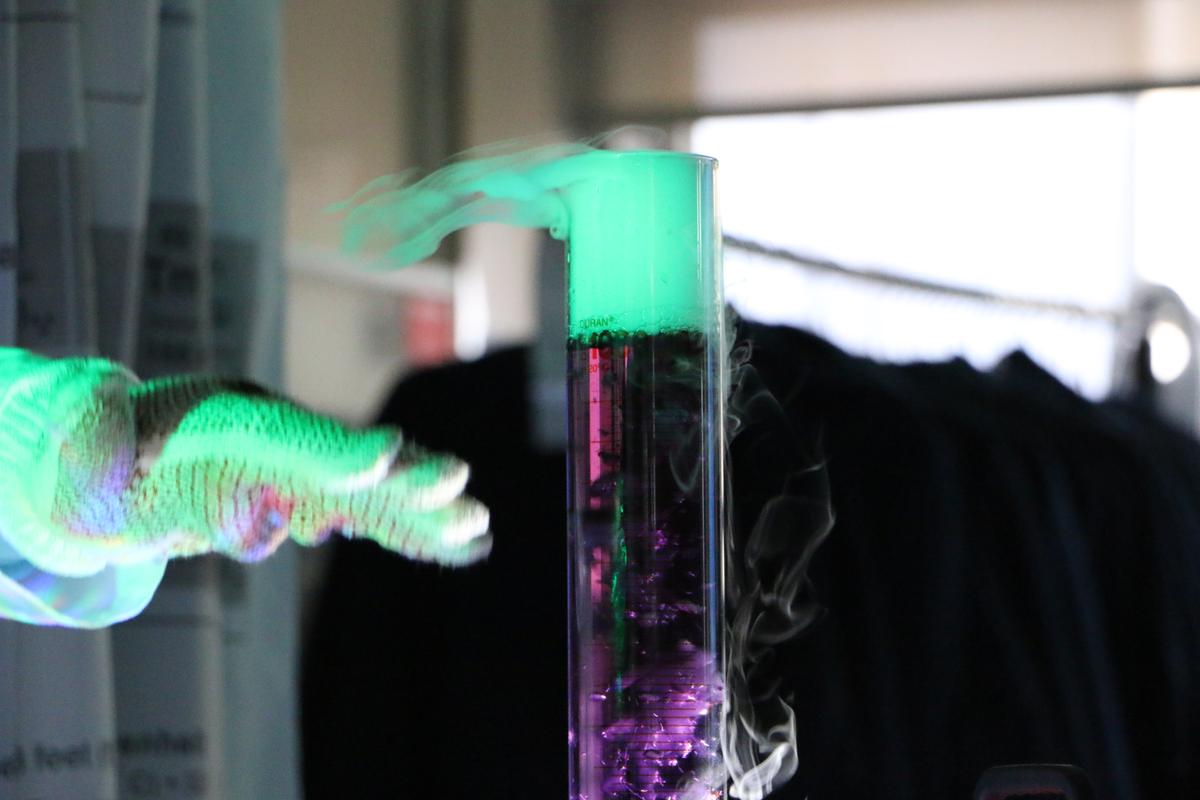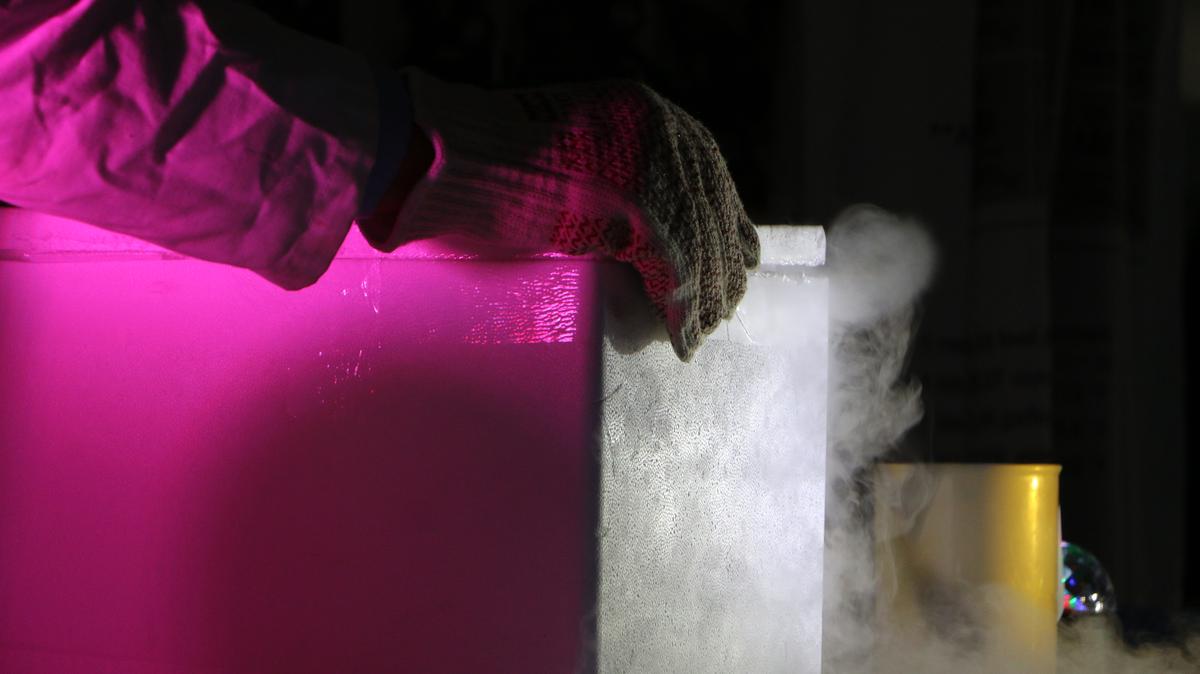Science Week
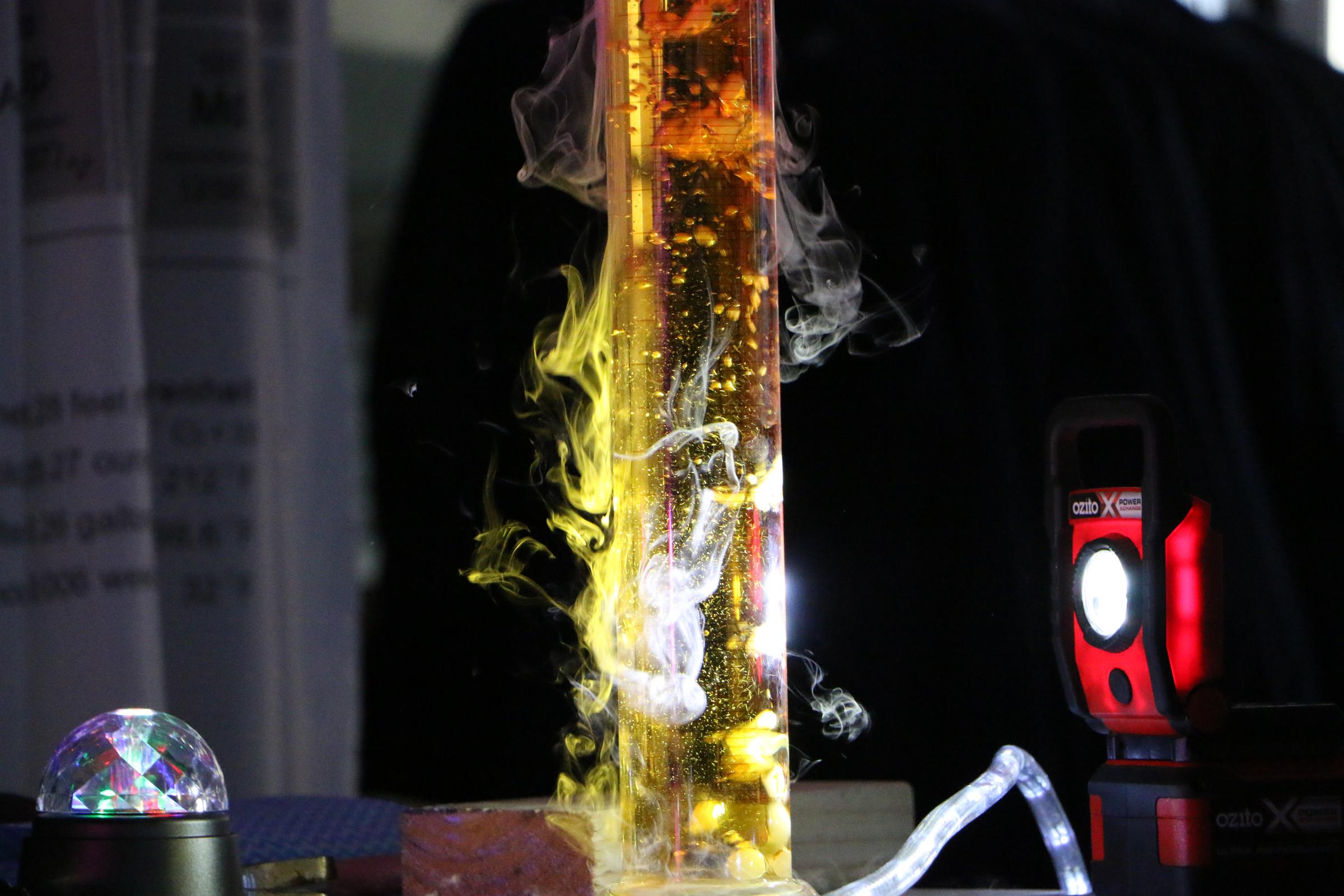
Welcome to Science Week!
The phrase "Good things Come in Glass" has been put forward in advertising, and this is often true!
The ubiquity, wonders associated with and the understanding of GLASS, is this year's Science Week theme. Optics, colour and perception of light we choose as subsets of the theme.
This week our students were lucky enough to participate in the following experiences:
- The amazing Professor Jones (specially appointed for science week) and his helpers manufacturing an alternative optic fibre (to be taken to the node I believe), normally made of glass. This will be a very good way to get fibre into your diet of science
- A science-art contribution project, where students and staff can draw in their light-bulb moments in science onto a community canvas
- Primary students are looking for a kaleidoscopic view of life, so are manufacturing their own kaleidoscopes using the principles of reflected light and symmetry
- " Hubble, Bubble Boil and Bubble!" (apologies to Shakespeare)...nitrogen boils at minus 195 degrees. Another appointee for Science Week, Professor Schultz puts on a show as he demonstrates the wonders of liquid nitrogen with colourful lighting effects
- Prof. Schultz with his solid CO2 and liquid Nitrogen tricks in the colourful and misty world of the S5 Science Cave at lunchtime
- Terrarium construction
- The melting of glass
- Lanterns using recycled jar
It was a joy to see the smiles on faces as students attempted the making of various glass-like materials for science week projects. One group manufactured a 7metre+ optic fibre across the room, and another achieved 48 metres later. That fibre extended out of the door and through the corridors of the middle school building.
The kaleidoscopes made by the students and the viscosity testing on honey were also great to see over in primary. Honey has amorphous properties like glass in the uncrystallised state, allowing it to be transparent. A difference is that glass never really crystallises due to its tangled molecules, whereas honey can due to its shorter sugar molecules.
Glass is made of largely Silicon and Oxygen atoms joined in giant molecules in non-crystalline solids, and the raw material from which it is made is sand. Glass's versatility of uses and its endless renewability make it a fine material, so much so it has online friends:
https://www.friendsofglass.com/ecology/reasons-why-glass-is-sustainable/
Its high refractive index, means that it is used to allow better focus and vision for billions of people around the globe via glasses and contact lenses. These qualities are also important in other lens use such as microscopy and astronomy. Its hygienic properties, chemical inertness and transparency mean it is important in medicine and health. An example is its use in In Vitro (meaning within glass) Fertilisation (IVF). Glass's many forms are integral in building, architecture, the arts, and lighting. It is ever-present in the various screens that we spend a lot of our lives watching.
The combination of sand, limestone and soda ash at 800-900 degrees C containing the elements Silicon, Oxygen, Calcium, Carbon and Sodium, is a common method for glass production where Silicon Dioxide giant molecules incorporate the other elements into their structure.
Glass as an independent object (mostly as beads) dates back to about 2500 bc. It originated perhaps in Mesopotamia and was brought later to Egypt. Vessels of glass appeared about 1450 bc, during the reign of Thutmose III, a pharaoh of the 18th dynasty of Egypt.
Its place in art and design in art deco and more recent times is well-known in, now highly collectible, decoration and domestic wares. Fine examples that are internationally known are Tiffany (NY), Bohemia Crystal, Venetian Glass and heat-resistant Corning Ware.
https://en.wikipedia.org/wiki/Tiffany_glass
One of the subtleties in producing art glass that affects its strength and appearance is its rate of cooling from the molten state, in a process called annealing. This is where molecules are given the chance to try and find the optimum relaxed state. Hey, don't we all when we can!! No wonder some glass objects can be great to have around.
Food and drinks in glass
The expressions "Raise a glass.." "I have a jar of..." are just a couple of ways glass is referred to in the way we consume food and drink but also store it.
Iconic food preservation methods like that used with the Fowlers Vacola home preserving equipment are still around but common across Australia in previous generations. A pantry could be stocked with tall glass jars of preserved fruit like peaches, pears, plums and apricots. In this way, the abundance of the harvest from a backyard fruit tree or cheaper in-season fruit could be enjoyed throughout the year. Soft drinks, beer, wine, champagne etc. are contained in glass mainly and vast amounts are transported in our modern economies. Important aspects of this use of glass are hygiene, appearance-of-product, shelf-life and relative ease of recycling. With intractable plastic waste in vast quantities from food and drink packaging getting into our oceans, glass is making a comeback as a way of slowing this process. Smaller dairy outlets are again providing their milk in glass bottles. Some food processors are installing glass crushers and re-forming their own containers.
Food for thought
Perform Education, a visiting duo of professional actors and science educators, informed and educated our year 7s 8s and 9s yesterday with a lively interactive performance in their dynamic show "Window to the World". Teachers cheered for contestants in the game show "Tic-tech-toe", and decorum was sometimes waived in favor of a little hootin' and a-hollerin' ! The students had a great time and were engaged throughout with plenty of smiles on dials.
Well... I have touched on the use of glass as a sustainable, enduring and versatile material, and how it is ubiquitous in our modern civilisation. I will end on what I hope is a good note and something you might enjoy listening to.....
https://www.youtube.com/watch?v=eEKlRUvk9zc
Thanks to all for your enthusiasm, involvement and support
Mr Nevil Schltz
Science & Maths Coordinator





